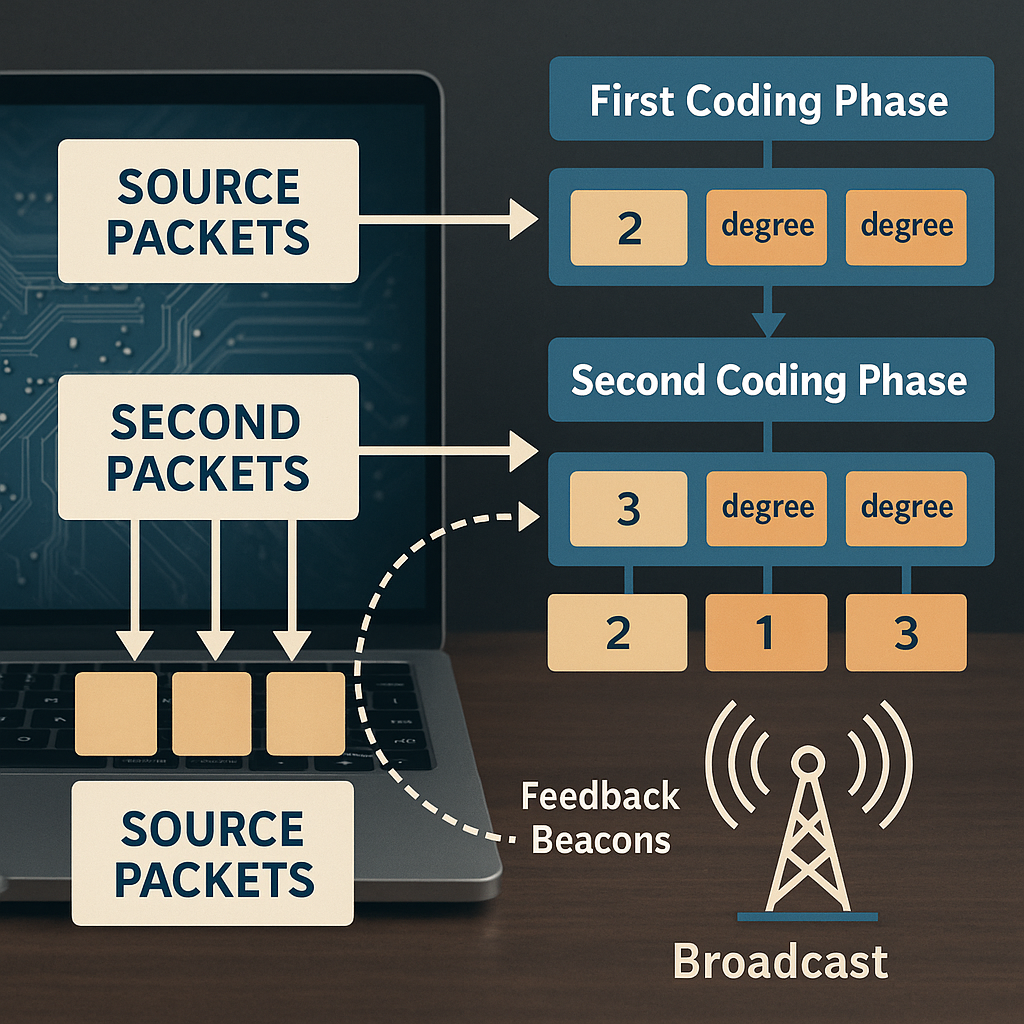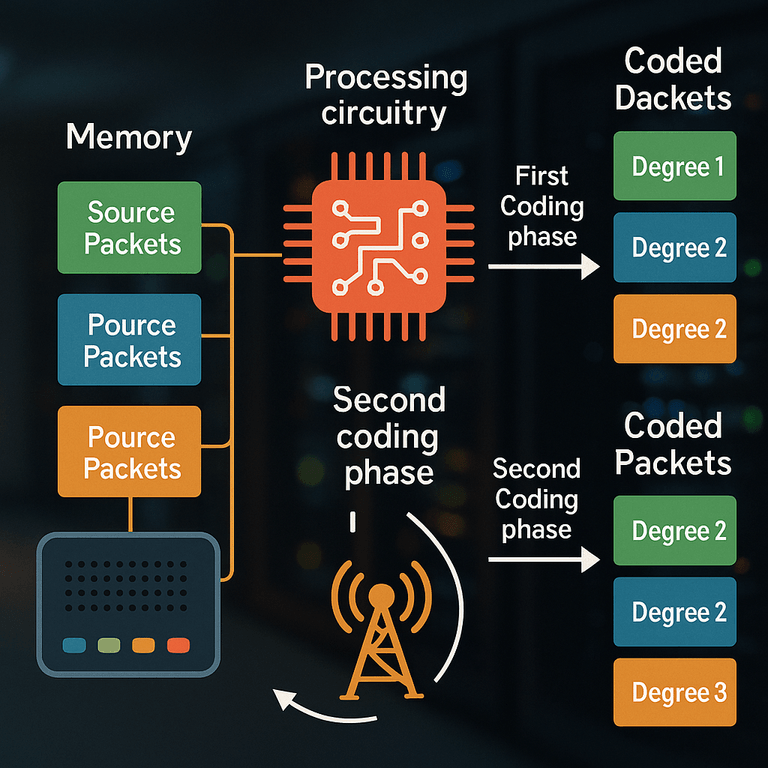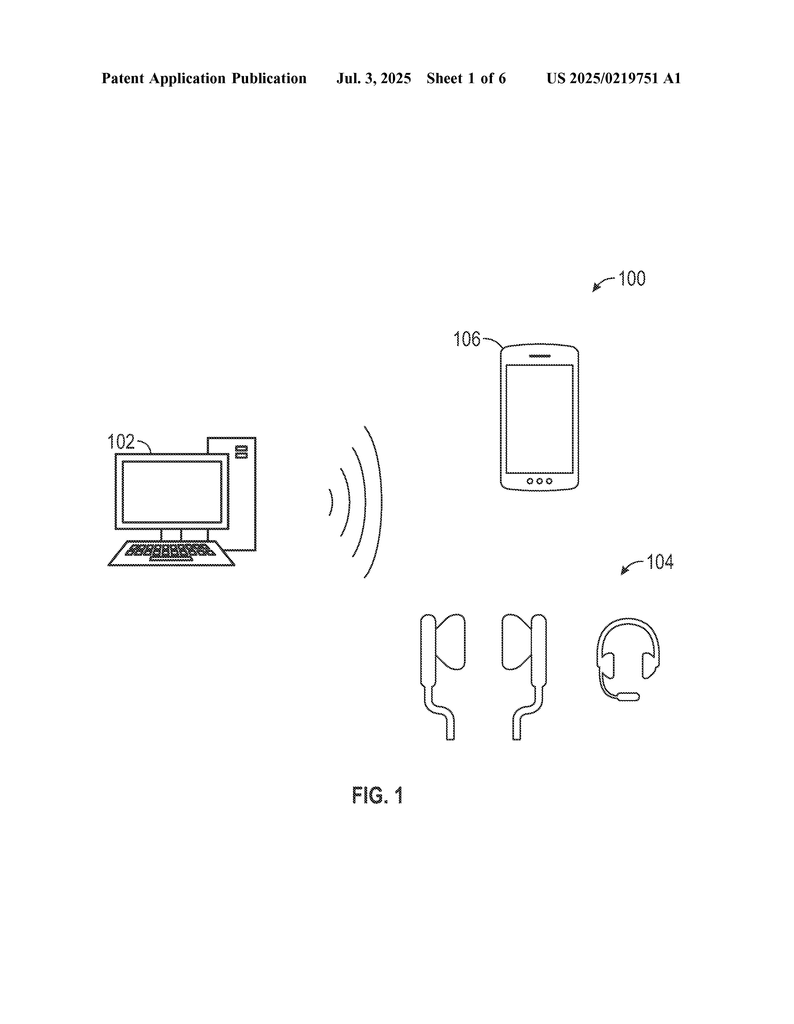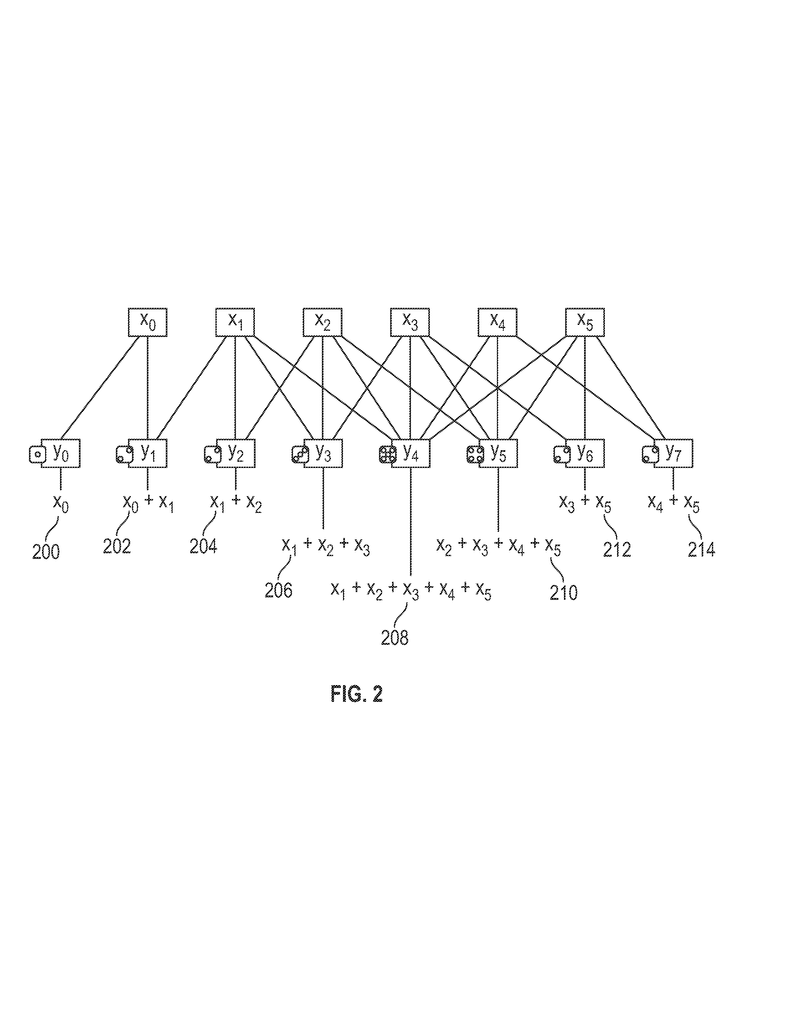Invented by Petit; Barath C., Devegowda; Chandrashekar, Bhasin; Sheetal, Chandel; Amit Singh, Manohar; Naveen, Rathi; Ashwini, Thakur; Jayprakash, Chakraborty; Suranjan
When you listen to music wirelessly, especially in a crowded place, you want the sound to be clear and smooth. But sending sound data over the air to many devices at once is not easy. This article explains a new patent that makes Bluetooth broadcasts, like those used for wireless headphones, much more reliable and smart. We’ll walk through the market background, the science behind it, and what makes this invention stand out.
Background and Market Context
Today, almost everyone uses wireless devices. Bluetooth headphones, earbuds, hearing aids, and speakers are everywhere. In stores, schools, stadiums, or even at home, people want to hear music, lessons, or announcements without wires. This is called “broadcasting”—sending one stream of audio to many people at once. Bluetooth Low Energy (LE) Audio is a newer technology that lets devices use less power and gives better sound. It is more efficient and works well for sharing audio with lots of people.
But there is a big problem. When many people listen in at the same time, it is hard for the broadcaster (the device sending the audio) to know if everyone got the message. If someone in the back of the classroom or the far end of the store misses a part of the audio, they might not hear everything. The simplest way to fix this is to send the same packet of audio data again and again. However, this quickly eats up the airwaves and battery life. It slows down the network and can even make the sound choppy or delayed.
This is important not just for music lovers. In public places, announcements need to be clear and reach everyone. In classrooms, students using hearing aids need to hear every word. In stadiums, fans want to hear commentary in real time. As more people use wireless devices, the need for reliable and smart audio broadcasting is growing fast.
Bluetooth LE Audio was made to help with these needs, but it still faces trouble when handling many listeners at once. The main issue is feedback. Normally, your device tells the broadcaster, “I got the message!” This is called an acknowledgement or ACK. But if thousands of headphones all reply at the same time, it causes a traffic jam called “ACK implosion.” The broadcaster can’t handle so many replies, so it has no idea who heard the message and who did not. To avoid this, today’s systems just send everything twice or even more. This is wasteful and not smart.
People want better. They want their wireless devices to last longer, sound better, and work even in crowded places. Companies also want to save power, save bandwidth, and keep everyone happy. The market is ready for a better way.
Scientific Rationale and Prior Art
To solve the broadcast problem, scientists and engineers have tried many tricks. One of the oldest is simple repetition: just send the same packet again and again. This is like shouting the same word several times in a noisy room, hoping everyone hears at least one. It works, but it’s not smart. It wastes energy, fills up the airwaves, and still doesn’t guarantee everyone hears everything.
Another method is to use “acknowledgements.” Each listener says, “I got it!” But, as we saw, this doesn’t work when there are hundreds or thousands of listeners. The broadcaster gets flooded with too many replies and cannot keep up.
A more advanced idea is “rateless coding.” This is a clever trick from information theory. Instead of sending the same data over and over, the broadcaster mixes up the packets in special ways. Think of it like mixing ingredients to make different cakes. If you eat enough cakes, you can figure out what the ingredients were, even if you missed a few cakes. In computer terms, each packet is a mix (using math like XOR, which is just a way of combining numbers) of different pieces of the original data. If you collect enough mixed packets, you can solve the puzzle and get the full message.
Rateless codes have been known for a while, like LT Codes and Raptor Codes. They are used in places where you can’t be sure if every packet will get through, like satellite communication or streaming video over the internet. The power of rateless codes is that you don’t need all the packets, just enough of them. You also don’t need to know in advance how many you will need. This is why they are called “rateless”—the sender can keep sending more packets until the receiver says, “I have enough!”
But classic rateless codes are not perfect for Bluetooth audio broadcasts. They don’t always match the needs of real-time audio, where timing is important, and where devices have limited power and memory. Also, earlier systems don’t let the broadcaster adjust its behavior based on real-time feedback, because direct feedback from many listeners is hard to handle.
Another challenge is that each “coded” packet can be made from different numbers of original packets. This is called the “degree” of the coded packet. Some packets might mix only two originals, while others might mix many. The way these degrees are chosen affects how quickly and easily the original data can be recovered at the receiver. Using the right mix of degrees can make the system faster and more reliable.
So, while rateless coding and feedback systems have been around, there was no good way to combine them for Bluetooth LE Audio broadcast—until now. This new invention brings together smarter coding and a way for the broadcaster to get useful feedback, all without flooding the airwaves or draining batteries.
Invention Description and Key Innovations
This patent introduces a new way to make Bluetooth LE Audio broadcast more reliable and efficient, using a two-phase rateless coding scheme and a clever feedback system.
Let’s break it down simply:
The broadcaster (like your phone or a public announcement system) has a set of original data packets to send. Instead of just sending each one over and over, it creates coded packets. Each coded packet is a mix of some of the original packets. The number of originals mixed together for each coded packet is called its “degree.” Mixing is usually done with a simple mathematical operation, like XOR, which can be undone later.
The invention divides the process into two phases:
Phase One: Diversity with Low Degrees
In the first phase, the broadcaster creates a set of coded packets, each with a low degree. This means each packet is made by mixing just a few original packets together. These packets are spread out so that every original packet is included in at least one coded packet. This helps make sure that, even if some packets are lost, the receiver has a good chance of getting enough pieces to solve the puzzle and recover the original data.
Phase Two: Recovery with High Degrees
In the second phase, more coded packets are made, but now each packet mixes together many original packets (high degree). This is like making each new cake with almost all the ingredients. These high-degree packets are very good at helping recover any missing originals, especially if some of the first-phase packets were lost.
The broadcaster keeps track of how many total coded packets have been sent. The total number is always more than the number of original packets, but not by much. This keeps the transmission efficient. The process of choosing the degree (how many originals to mix for each coded packet) is not random—it uses special math rules called probability distributions. In Phase One, the system prefers low degrees (like 2 or 3), while in Phase Two, it prefers high degrees (maybe as many as all originals). By following these rules, the system ensures packets are easy to decode and recovery is fast.
Another smart part of the invention is how it handles feedback. Instead of every listener sending a reply for every packet (which would cause an ACK implosion), the system uses “beacon” messages. Each listener, usually through a helper device like a smartphone, sends small feedback messages at set times. These feedback beacons tell the broadcaster things like how strong the signal is or whether the listener is still present. The broadcaster uses this feedback to adjust its transmission—if many listeners are having trouble, it can send more packets or boost the power. If most listeners are fine, it can save power and bandwidth by sending less.
This feedback system is scalable. It works even with hundreds or thousands of listeners. The beacons can be encrypted for security. The timing of the beacons can be arranged so they don’t all arrive at once, avoiding new traffic jams.
The invention does not require big changes to existing Bluetooth standards or devices. It can work with today’s Bluetooth hardware with only software updates. This makes it easy to adopt and brings benefits to users and companies very quickly.
Let’s look at the real-life impact. With this system, broadcasts become more reliable. Listeners get smoother audio, even in crowded places. Devices use less power, so batteries last longer. The broadcaster can serve more listeners without slowing down. And when listeners leave, the system can stop sending, saving even more energy. These improvements matter for schools, stadiums, malls, airports, and anywhere wireless sound is needed.
There are other technical bonuses too. The system can adjust to changing conditions in real time. If the network gets noisy, it can send more or stronger packets. If conditions improve, it backs off to save resources. This flexibility is a big step forward.
Behind the scenes, the patent also supports using these ideas with other wireless systems, like Wi-Fi. The coding and feedback methods are not just for Bluetooth; they could be used wherever many devices need to get the same data at once.
Conclusion
This patent brings a fresh solution to a growing problem in wireless audio broadcasting. By combining a smart, two-phase rateless coding system with a scalable feedback method, it makes Bluetooth LE Audio broadcasts more reliable, efficient, and flexible. Users get better sound; devices last longer; companies save bandwidth and power. The invention is simple, yet powerful, and fits right into the way people use wireless audio today. As the world becomes more wireless and connected, solutions like this are the key to making sure everyone hears what matters—clearly, reliably, and with ease.
Click here https://ppubs.uspto.gov/pubwebapp/ and search 20250219751.




